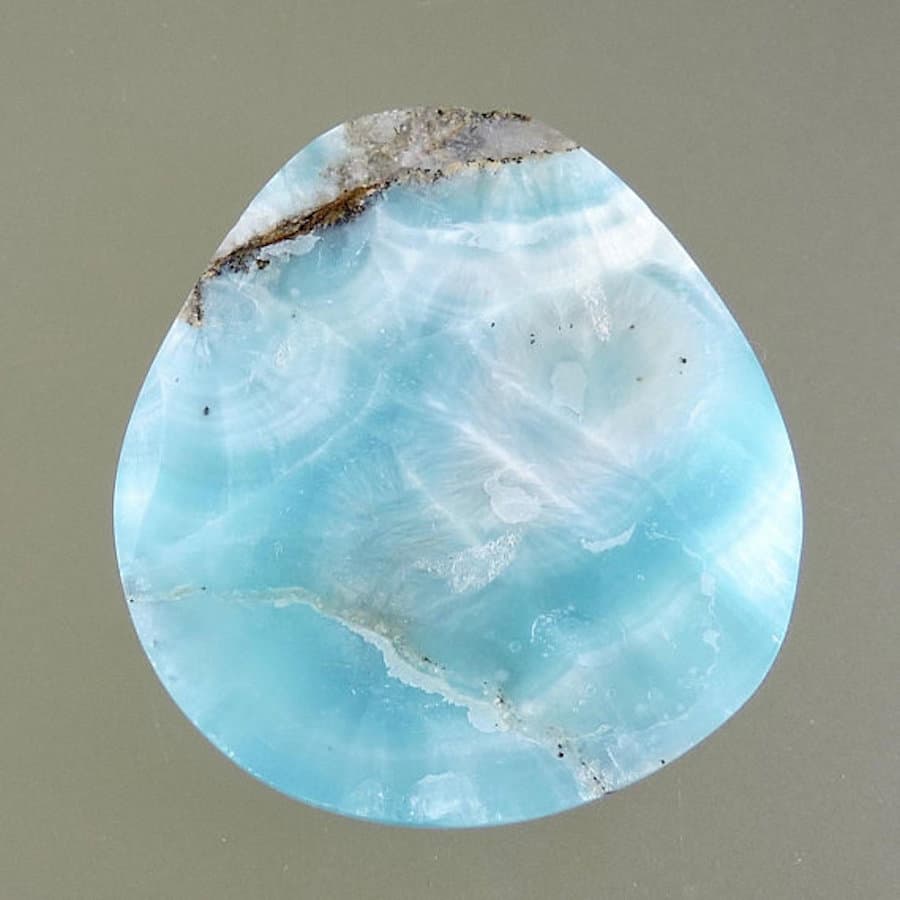Hemimorphite Value, Price, and Jewelry Information
Massive hemimorphite can have a very delicate, blue color. However, it's seldom cut because not very much has appeared on the market.
1 Minute Read
Massive hemimorphite can have a very delicate, blue color. However, it’s seldom cut because not very much has appeared on the market.
Start an IGS Membership today
for full access to our price guide (updated monthly).Hemimorphite Value
Comments
Hemimorphite is very rare as a faceted gemstone. So far, only Mexico has produced suitable material. However, gem cutters have cut cabochons from material found in many locations.
In the early 19th century, the British mineralogist James Smithson discovered that the zinc ore then known as calamine was composed of hemimorphite and smithsonite. These minerals, along with hydrozincite, are, in fact, distinct minerals despite their external similarities.
Identifying Characteristics
As crystals, hemimorphites show different terminations at each end. Hence the name hemi - morphite, since each end or "half" takes a different "form."
This gem exhibits the pyroelectric effect. When heated, it generates an electrical charge.
Synthetics
No known synthetics. However, gemologists have identified artificial simulants, such as partially devitrified glass. (The process of devitrification produces crystals in normally amorphous glass).
Natural gems such as smithsonite, chrysocolla, and turquoise may also resemble hemimorphite. However, these gems possess very different properties and should be distinguished easily. Chrysocolla's and turquoise's specific gravities differ significantly from hemimorphite's. Smithsonite's specific gravity and optic sign also differ from those of its former partner in calamine.
Sources
In Mexico, Mapimi, Durango and Santa Eulalia, Chihuahua can produce transparent crystals up to several inches in length, which may yield stones up to approximately 7-10 carats. Blue crusts are also found. Other Mexican locations produce beautiful gems as well.
This mineral is found in various localities worldwide. Other notable gem-quality sources include the following:
- United States: southwestern states.
- China; Democratic Republic of the Congo; Republic of the Congo; Italy.
Stone Sizes
Gem cutters have cut cabochons up to several inches in length from massive blue material. They've also faceted colorless material from Mexico into gems from 1-3 carats in size. Larger stones are very rare.
- Devonian Group (Calgary, Alberta, Canada): 1.90 (colorless, Mexico).
Care
Due to their relatively low hardness, store these gems separately from other harder, more common jewelry stones, such as quartz. For cleaning, use a soft brush, mild detergent, and warm water only. Consult our gemstone jewelry cleaning guide for more recommendations.
Joel E. Arem, Ph.D., FGA
Dr. Joel E. Arem has more than 60 years of experience in the world of gems and minerals. After obtaining his Ph.D. in Mineralogy from Harvard University, he has published numerous books that are still among the most widely used references and guidebooks on crystals, gems and minerals in the world.
Co-founder and President of numerous organizations, Dr. Arem has enjoyed a lifelong career in mineralogy and gemology. He has been a Smithsonian scientist and Curator, a consultant to many well-known companies and institutions, and a prolific author and speaker. Although his main activities have been as a gem cutter and dealer, his focus has always been education.
International Gem Society
Related Articles
Jasper Value, Price, and Jewelry Information
Tanzanite (Zoisite) Value, Price, and Jewelry Information
Tugtupite Value, Price, and Jewelry Information
Malaya or Malaia Garnet Value, Price, and Jewelry Information
Never Stop Learning
When you join the IGS community, you get trusted diamond & gemstone information when you need it.
Get Gemology Insights
Get started with the International Gem Society’s free guide to gemstone identification. Join our weekly newsletter & get a free copy of the Gem ID Checklist!
